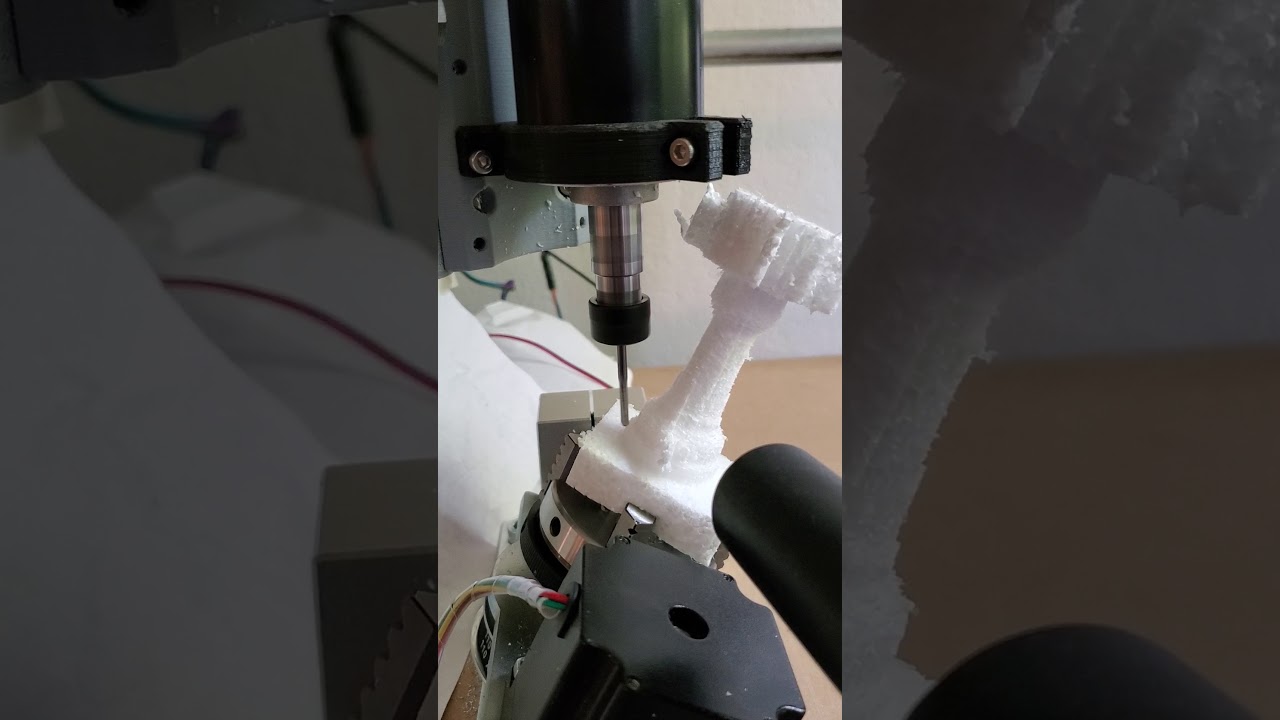Started working on this August of last year, and it’s finally in a usable state. Been adding inserts into the waste board for work holding as well as holding the 4+5 axis.
For the most part, assembly was pretty straight forward. Everything is mounted to a 2’ x 2’ x .75" board of mdf, sitting precariously on a $10 ikea lack table(literally the most unstable table you can buy). I got as big nema17 steppers as I could find on aliexpress, powered by an skr v1.3 with tmc2130 drivers(more on this later). The spindle is likewise from aliexpress, a 500w space/sound efficient rotary tool compared to a router. Surprisingly, the torque is quite good especially as I found the newer versions run at 100V instead of whatever they were running at before. I also “modded” the belts to be 10mm instead of the standard 6mm. Getting the X/Y rails to work was as simple as doubling up on the bearings. Unfortunately, I got a pack of low quality bearings from aliexpress and they make some sort of rattling(?) sound when the gantry moves. Although the skr board can support individually wiring each stepper motor, the X/Y steppers are wired in series to save 2 stepper drivers for the 4th and 5th axis. Sensorless homing works great, the gantry slams right up against the side. The overall construction is as square as I could get it with just a tape measure. At 500mm x 500mm with a work volume of 365mm x 345mm x 180mm, a little out square can be worked out later…
5 axis adventures:
After seeing a relatively affordable 4+5 axis assembly on aliexpress(again), I decided I would try and get my mpcnc to support this. Luckily the z height ended up being high enough to mostly work with it. The construction of the assembly was pretty ok, steel everywhere, feels solid. One of the plates for the motor mount was bent on arrival tho, so I had to arbor press that back to flat. Overall, with its nema23 motors, I think it’s going to serve me well for a desktop cnc.
Now for the fun part, getting the software/firmware working. I didn’t just want 3+2 machining, I wanted full simultaneous 5 axis. You could probably get 3+2 working with some basic Marlin tweaks and a fusion 360 post processor, but I didn’t dig too deep into that. For full 5 axis control on the skr 1.3, it looked like smoothieware was going to be my firmware of choice. Unfortunately, it doesn’t support tmc2130 spi configuration natively. There was, however, a pull request with tmc spi support. Over the course of several weeks, testing this code as well as giving up and trying alternative firmware options, I finally figured out smoothieware doesn’t support software spi. Traditional hardware spi uses pins internally configured for the spi protocol, but skr decided that using Marlin’s software spi would be good enough. So I haphazardly copy pasted some software spi code that could bit bang the protocol and got smoothieware to communicate with my drivers.
Lastly, getting fusion 360 to output the correct gcode for smoothieware. Fusion comes with a grbl post processor, which is able to interface with smoothie quite nicely, as long as you’re in cnc mode. But grbl doesn’t natively support 5 axis control, so the post processor has those functions disabled. After some fiddling and copy pasting some post processing code for some haas machines, I was able to have fusion give proper gcode while being “machine aware”.
This project is far from over, but I think it’s got a good start going for it. I’ll eventually update with some 5 axis machining videos, if all goes well.


